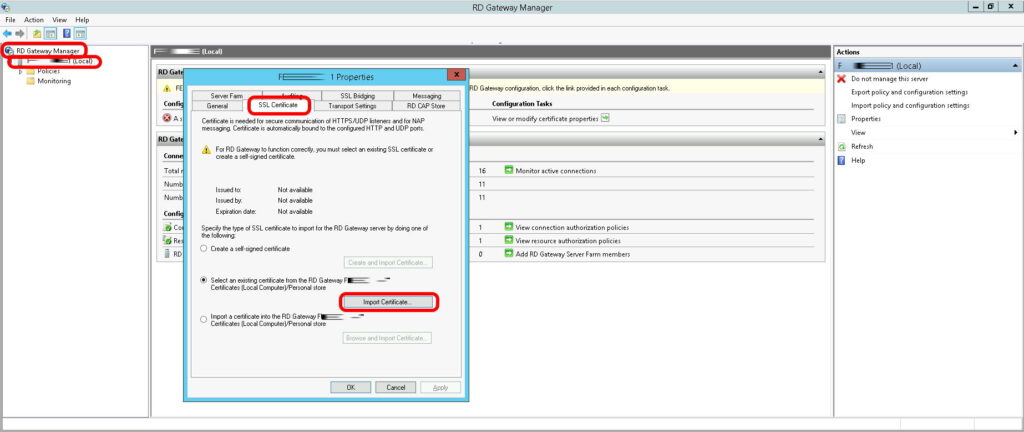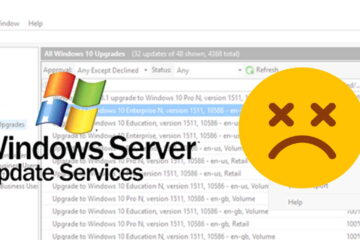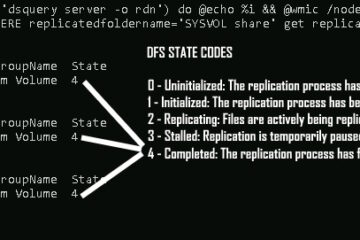UPDATED July 25 2022
CREATE A NEW CERTIFICATE REQUEST:
- Launch IIS Manager and click the SERVER name (not the websites or virtual directories)
- In the IIS section, click SERVER CERTIFICATES (if you don’t see this, you are likely not at the server level, go click on the server name at the top of the IIS Manager CONNECTIONS tree)
- Click CREATE CERTIFICATE REQUEST and complete the form. Note that the only things that really counts is the certificate name (like tsg.commodore.ca) and company information.
- Click NEXT and on the CRYPTOGRAPHIC screen, leave the default MICROSOFT RSA… provider option but you mush change the BIT LENGTH to 2048.
- Specify a path for the CSR. I like C:\ but it realy make no difference.
SUBMIT YOUR CSR AND GET A NICE NEW CERTIFICATE:
- Surf on over to GODADDY.COM or your favorite provider.
- Pay them for the cert
- Submit the CSR.
- Wait for an approval request email from GoDaddy (or whoever you used).
- Click the link in the approval request email and approve the request.
- Wait anywhere from 2 minutes to 2 hours and check your GoDaddy account for the new cert then download it to your server.
- Perhaps everyone does this but I know for sure that GoDaddy will take your new cert dates and extend them by the amount of time left on your existing cert. For example, if you buy a 1 year cert and your current cert expires in two months, GoDaddy will give you a new cert which expires in 14 months.
- GoDaddy will give you two certs: 1: your cert 2: an intermediate cert. If this is a renewal, you can ignore the intermediate cert because you already installed in when you installed your first cert.
- If you have any questions, call GoDaddy at 480 505 8877 any time day or night, they are awesome. (And no, GoDaddy does not pay me anything… I just like them.)
INSTALL A CERTIFICATE ON THE RD GATEWAY SERVER:
- Open the Certificates snap-in console. If you have not already added the Certificates snap-in console, you can do so by doing the following:
- Click Start, click Run, type mmc, and then click OK.
- On the File menu, click Add/Remove Snap-in.
- In the Add or Remove Snap-ins dialog box, in the Available snap-ins list, click Certificates, and then click Add.
- In the Certificates snap-in dialog box, click Computer account, and then click Next.
- In the Select Computer dialog box, click Local computer: (the computer this console is running on), and then click Finish.
- In the Add or Remove snap-ins dialog box, click OK.
- In the Certificates snap-in console, in the console tree, expand Certificates (Local Computer), and then click Personal.
- Right-click the Personal folder, point to All Tasks, and then click Import.
- On the Welcome to the Certificate Import Wizard page, click Next.
- On the File to Import page, in the File name box, specify the name of the certificate that you want to import, and then click Next.
- If you specified a password for the private key associated with the certificate earlier, type the password.
- If you want to mark the private key for the certificate as exportable, ensure that Mark this key as exportable is selected.
- If you want to include all extended properties for the certificate, ensure that Include all extended properties is selected.
- Click Next.
- On the Certificate Store page, accept the default option, and then click Next.
- On the Completing the Certificate Import Wizard page, confirm that the correct certificate has been selected.
- Click Finish.
- After the certificate import has successfully completed, a message appears confirming that the import was successful. Click OK.
- With Certificates selected in the console tree, in the details pane, verify that the correct certificate appears in the list of certificates on the RD Gateway server. The certificate must be under the Personal store of the local computer.
MAP A CERTIFICATE TO THE LOCAL RD GATEWAY SERVER:

- You must use RD Gateway Manager to map the RD Gateway server certificate.
- If you map a RD Gateway server certificate by using any other method, RD Gateway will not function correctly.
- Launch RD Gateway Manager.
- Right-click the local RD Gateway server name, and then click Properties.
- On the SSL Certificate tab, click Select an existing certificate for SSL encryption (recommended), and then click Browse Certificates.
- In the Install Certificate dialog box, click the certificate that you want to use, and then click Install.
- Click OK to close the Properties dialog box for the RD Gateway server.
- If this is the first time that you have mapped the RD Gateway certificate, after the certificate mapping is completed, you can verify that the mapping was successful by viewing the RD Gateway Server Status area in RD Gateway Manager. Under Configuration Status and Configuration Tasks, the warning stating that a server certificate is not yet installed or selected and the View or modify certificate properties hyperlink are no longer displayed



0 Comments